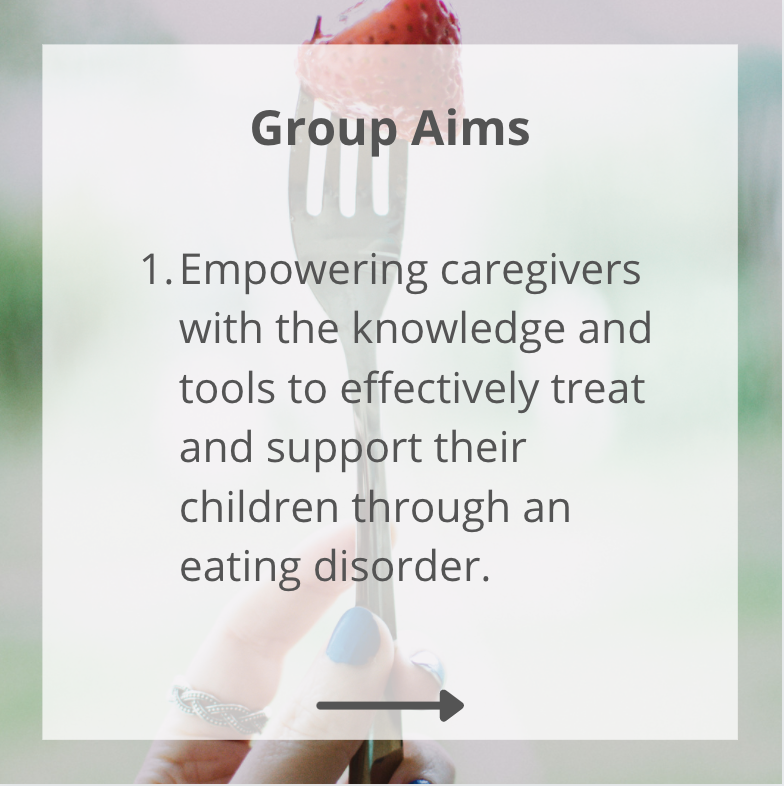Here’s some more Halloween spirit from our awesome team at PBS!
Here’s some more Halloween spirit from our awesome team at PBS!


Happy Spooky Season! October 25 through 29th marks spirit week here at Potomac Behavioral Solutions. We are all super excited! Here are some highlights from Monday’s Pajama Day.







As a parent, you might feel some anxiety around Halloween approaching. There’s candy…everywhere… and your kids want it all. Or at least that’s how it may feel.
So how do you navigate allowing your child to eat candy? Many parents worry their child will eat too much.
Here’s some sweet food for thought:
Treat candy the SAME as any other food, even vegetables.
-Why? Because this will reduce the forbidden or “special” label on it. As humans, we like special things, limited time offers, forbidden treasures, and novelty items. By putting candy on the same playing field as veggies, it’s no longer this special it to be desired after.
Allow your child to eat as much as they want.
-If they eat too much, then they’ll get a stomachache and learn to eat less next time. Self regulating the amount they eat will help them feel satisfied and confident in their abilities to eat.
Encourage your child to eat it as a part of meal or snacks.
-This will ensure your child eats a variety of foods. This will also reinforce the first 🍭point. It also teaches that food isn’t something that needs to be earned (ex. If you eat your veggies you can get dessert).
More questions about this? Meet with our dietitian nutritionist!
Call the front desk to schedule an appointment.

When we think of hunger signs we commonly imagine the classic sign of a growling stomach. Yet, there are a variety of hunger sings, some more subtle than others.
Headache or Mental “Fog”
When you haven’t eaten in 3+ hours your body will experience a gradual dip in blood sugar levels. This can lead to a headache or lack of mental clarity. You might find it difficult to focus on a task or notice yourself continually zoning out.
Tiredness
If the body is running low on energy, then we will likely feel tired. This can be one sign that it’s time to eat again.
Food Thoughts
Are you constantly thinking about food or drawn to pictures of food? We are biologically wired to seek food when our body is hungry. This might show up as obsession with cooking, food pictures, grocery stores, or planning food.
Anxiety or Fidgeting
While anxiety can have many origins and influencers, one of those can be related to hunger. When the brain is malnourished or hungry, it can produce an anxious state. Scientists suspect the anxiety might be a biological drive to make us more alert for food sources.
Irritation or Hangry
Hangry is the mix of hunger and anger. When you notice your irritated (especially if its for no reason) check in with yourself. When was the last time you ate? Was it enough? Perhaps try eating something.
Feeling shaky or weak
When the body is running low on energy, you might feel physically shaky or weak. Physical exertion, such as lifting weights, running, etc. may become more difficult than usual. This is a sign that your body doesn’t have enough energy.
Nausea or Stomach Pains
This one may seem counterintuitive, however, nausea can sometimes be a symptom of hunger. This can occur due to the acidity of stomach acid, in addition to taking certain medications (ex. NASIDS) or supplements (ex. multivitamin) without food.
While this isn’t an exhaustive list of hunger signs, it hopefully provides you some guidance on navigating your less obvious hunger cues. Questions or want more? Contact us to meet with our nutritionist!

Life starts at the end of your comfort zone!
🪐You have to challenge yourself. Do the things that you fear. Do the things that frustrates you. This can look like so many different things. Getting that degree, leaving your job to pursue your passion, talking to someone, relaxing and caring for yourself, eating, opening up in therapy, going on a solo trip, etc. Therapy can be helpful for guiding yourself into the unknown. There is so much life to live if you open your eyes and take a step.
🪐Think: What’s something you’ve done or want to do that’s outside of your comfort zone?

FACT: Research shows that diets are proven to fail long term (~5-10 years post start of the diet). The research that shows weight loss diets “working” is all conducted within the 5 years time or less.
Why do diets not work?
Well, first of all, your body is WAYYY smarter than any diet program. Your body recognizes “oh crap, I’m not getting enough energy; there is a limited amount of food…guess I should slow things down.”
You’re body doesn’t know the different between purposeful restriction and unintentional /environmental restrictions. And let’s be real, it all has the same outcome of reducing the body’s ability to repair, move, think, grow, and heal.
Now you’re probably thinking “okay, great, what do I do now?”
Eat like you did as a young child. Eat in a way that respects your physical and emotional needs. Become attuned with your body, listen to it, and nourish it.
If you feel really detached from with body’s needs, that okay. You’re not alone.
Working with an ED-informed or intuitive eating specialist can be really helpful in rebuilding a healthy relationship with food.
Note: this post is not meant to replace individualized healthcare recommends. Information has been simplified for the purpose of making a brief post.

What does it mean to reclaim “binge foods?”
First, a “binge food” can be any type of food and it is specific to the individual. It’s a food that tends to be eaten in a binge. For some individuals they may have specific foods while others don’t.
When recovering from binge eating disorder (BED) you might be tempted to want to completely cut out all foods that you usually binge on. They may feel like triggers or scary.
Yet by cutting them out this is reinforcing restriction, and science shows us that (mental or physical) restriction often fuels binging.
Reclaiming that food means learning to eat it in a way that respects your emotional and physical needs.
For example if you usually binge X food, then reclaiming it would mean that you’re eating X food when desired until you are emotionally satisfied and physically comfortably full. You are reclaiming that food from the eating disorder.
The eating disorder has likely made it an “all or nothing” food, and by eating it in a self-attuned mindful way you are creating a middle ground.
This can be really scary and/or hard to do and should be done with the help of an ED-informed therapist and/or dietitian.
Contact us if you are interested in learning more!


Learn to laugh, be silly, bring the playfulness and fun back into your own life. Learn to laugh at yourself in a compassionate way.

Kittens are known for being some of the most curious creatures! Mindful curiosity is when we are respecting of others, ourselves, and the environment, and still being adventurous and curious. Never stop learning, questioning, or discovering. Life is so interesting and unique if you are open to it.

Sometimes we can be really ruff (pun intended) on ourselves. We are doing our best at whatever it may be…even if it’s surviving. You matter. You are worthy. Progress takes time.

In case you’re struggling with a case of the Monday Blues…. here ya go!
What is mindful movement?
Mindful movement is physically moving your body in a way that feels energizing, enjoyable, and uplifting. It celebrates your abilities and respects your limits. It brings your more in touch with your physical self.
Mindful movement is NOT…
- a workout program (it can include this if this is what feels good to you but it itself is not one)
- punishing, punitive, or painful
- focused on weight loss or changing the shape / size of your body
Mindful movement includes so many types of movement, not just the conventional ones.
For example, here are some potential types of mindful movement:
- hiking / walking
- sports (e.g. volleyball, spike ball, soccer, ping-pong, etc)
- dancing 👩🦽
- cleaning
- kayaking
- roller skating 🛼
- yoga / stretching
- rock climbing
slacklininging
- martial arts
Remember, some types of movement will feel positive while others may not. That is okay! And variety is key. Switch up your movement often. Focus on enjoying it, celebrating your abilities, and feeling connected with your body.
*Disclaimer: Make sure you are medically cleared by your healthcare teams before engaging in physical activity.

Family-Based ED Caregiver Skills Group starting on September 13th!
Will be held VIRTUALLY Monday 6-7pm for 10 weeks.
Lead by Eva-Molly Dunbar, MA
Co-lead by Rebecca Hardin, PsyD
This group is for caregivers of individuals with eating disorders, that are receiving FBT treatment at PBS.
In this group you will be able to:
share experiences on caring for your loved one with an eating disorder
receive peer support and professional guidance
and build coping skills to prevent burnout
Interested? -> contact us!
571-257-3378
info@pbshealthcare.com







THESE JEANS ARE ALL THE SAME “SIZE” ACCORDING TO THE TAGS.
Now visually we can tell that of course these jeans are not physically the same size as each other.
So even though you may be a size [something] in one brand, doesn’t mean there’s anything wrong with your body when the size doesn’t fit right elsewhere. Using arbitrary sizes to judge your body will likely lead you feeling upset and frustrated. Our bodys change from day to day, hour to hour. This is natural, normal, and healthy! We are dynamic and organic beings, rather than static machines.
With that being said, we recognize it can be hard to accept your body, or to accept that your body will change. We recognize that from a young age, many of us have been taught to feel a certain way about our bodies - such as it “needs” fixing. Therefore, it can be difficult to accept that your body doesn’t need to fixing. Instead, it likely needs compassion. So…
REMEMBER.... the clothes are meant to fit YOU. And not the other way around!
Contact us via our website or phone number if interested in services regarding body image.

“My kid is such a picky eater! I’m afraid they arent getting enough.”
Ever heard or said this phrase? Or perhaps you’ve said it before. It’s common for kids to go through a picky eating phase when they’re young. But….
How do you know when it becomes TOO PICKY?
they become emotionally distressed when told to have a food they dislike (e.g. crying, screaming, running away from table, etc)
they’re gagging on foods they don’t like
they will only eat VERY specific foods
their variety is severally limited
they aren’t growing sufficiently
This isn’t a diagnostic list but it gives an idea of the difference between simple food preferences and a type of disorder eating, called Avoidant Restrictive Food Intake Disorder (ARFID).
ARFID is typically first noticed in young children and can persist into adulthood if not addressed.
It frequently includes severe texture, taste, smell, and temperature preferences, resulting in a very limited diet and anxiety around food.
How to approach treatment?
Work with a trained ED-informed dietitian or therapist that provide in-person sessions
they will likely have your child do controlled food exposures with feared / disliked foods
these food exposures will likely need to be replicated and repeated at home
understand that these feared / disliked food may be very distressing for your child… AND that don’t mean they can’t grow distress tolerance to them
Interested in treatment? Message us through our website portal!

Being open and honest with other can be really difficult (understatement of the year).
It makes us vulnerable. Someone could hurt us in those moments if they wanted to. Yet, this is also where healing happens.
Think about it… if you scrape your knee, you initial reaction is going to be to cover it up with your hands, aka to protect it.
Yet, it can’t heal that way. You need antibiotic cream and a bandage. This requires you to remove your hands and be vulnerable so your knee can heal
Your emotional self needs healing, just like your physical self. ❤️🩹
When being vulnerable, try to open up with people that seem trustworthy, such maybe your therapist, caregiver, relative, mentor, friend, etc.
And know that sometimes we do get hurt when being vulnerable. AND that doesn’t mean you should never be vulnerable again.
Vulnerability is the birthplace of innovation, creativity, and change.









In order to change something we must first accept it as it is. Acceptance does not equate to condoning or agreeing with the situation. But rather, acceptance is acknowledgement without judgement that this is the situation. Once we can accept this is our situation, then we can move forward with changing the situation.




~ “I just DBT’d the sh*t out of that“ ~
We are excited the announce that we are doing a prize giveaway!! We appreciate everyone that is a part of our social media and blog presence. Therefore, we thought we’d give back to you through a fun raffle!
Want to win this awesome shirt??
Go to our instagram page by clicking the button below and comment on this post. Share about a time this week that you used a DBT skill! By sharing you will be automatically entered into the raffle to potentially win the shirt!
Written by Rodolfo Gonzalez, LCSW
What’s in a word? Understanding Racism (in Healthcare) through an Allegorical lens
When a word or phrase circulates too frequently into general use, it has a tendency to lose its effectiveness, and sometimes even its meaning. When it is something as innocuous as “literally,” we can just roll our eyes over its obnoxious misapplication and move on with our lives. But what happens when the word or phrase is important—and a clear, common understanding of its definition becomes critical to how we relate to each other and function within the different systems in society? Such is the case for “racism” and “systemic racism.” Although our current climate requires that we leave space to discuss these things, when everyone throws out these terms will-nilly, much like your favorite pair of jeans that you refuse to wash, they get worn down into too-faded versions of their former selves. When this happens, sometimes the best way to get people to gain a fresh perspective, is to do what all good writers know how to do—tell a story.
In her online lecture, “If Racism Is a Public Health Crisis, What Does That Mean for My Work?” Dr. Camara Jones, MD, MPH, PhD, tackled the subject using analogies and allegories. The four key messages presented were: racism exists; racism is a system; racism zaps the strength of the whole society; and we can act to dismantle racism. She also developed a framework for understanding racism on three levels: institutionalized, personally mediated, and internalized. Dr. Jones used the allegory, “A Gardener's Tale” to illustrate the relationship between the three levels of racism.
In the symbolic narrative, Dr. Jones uses two, large flower boxes (and their unequal soil qualities) to represent the disturbingly easy manner in which layers of inequity can occur. Without understanding the original environment, we can misunderstand and misinterpret the causes and connections that can lead to both failure and success (in this case, between pink and red flowers).Through the mundane, relatable act of gardening, we are able to acutely understand how institutional racism is the most fundamental of the three levels and must be addressed for important (and lasting) change to occur. It provides the insight that once institutionalized racism is addressed, the other levels of racism may cure themselves over time.
If you think you know how to recognize racism or systemic racism, I encourage you to read or listen to Dr. Jones’s presentation in its entirety and take notice the next time you get into another conversation with your neighbor on Facebook: what biases are we all working off of and are both sides willing to ask the questions that need to be asked?

Oh, the holidays….what a love, hate relationship they can create. The holidays are a wonderful time for fun festivities, reconnecting with loved ones, and enjoying good food. Unfortunately, the holidays may also bring about a number of stressors for many individuals, specifically in relation to food.
In the U.S., late fall and winter hold four popular holidays that largely revolve around food, that being Halloween, Thanksgiving, Christmas or Hanukkah, and New Year’s Day. While holiday foods can be exciting, enjoyable, and a social aspect for many individuals, others may find themselves anxious about being surrounded by candy, rich desserts and dishes, and alcoholic beverages. As a registered dietitian nutritionist at Potomac Behavioral Solutions, I have several clients that express increased concerns during the holidays relating to the fear of weight gain, the fear of specific desserts or dishes at an upcoming holiday, and the fear of eating in social settings. Ultimately, they all ask the same question of “how do I survive the holidays?”
While the answer is much more complex and individualized, there are some basic nutrition-related tips that can help! Please note, that your individual providers recommendations are primary and this is not a substitute for any medical or therapeutic advice.

Source:https://www.boredpanda.com/cats-eating-weird-things/?utm_source=google&
utm_medium=organic&utm_campaign=organic
I commonly hear people planning to restrict most or all meals Thanksgiving Day, until dinner time and they eat to the point of feeling “stuffed.” Whether you are struggling with recovery from an eating disorder or just wanting to improve your relationship with food, swinging from starving to stuffed is not optimal for overall well-being.
Restricting your intake can bring on feelings of irritability, depression, anxiety, dizziness, food obsession (aka food consumes your thoughts), and eating disorder related thoughts. Constrastingly, eating till you’re “stuffed” is frequently associated with feeling tired, sluggish, guilty, disgust, anxiety, depression, and a need for compensation (e.g. “I need to go for a run to compensate for this meal” or “I promise my diet starts tomorrow”).
Meal frequency means to eat a meal or snack in a normalized and appropriate frequency to ensure that you are eating enough calories and nutrients throughout the day. This typically looks like three to four meals and one to three snacks per day (your registered dietitian can help you individualize this). Normalized meal timing typically includes meals/snacks every two to five hours, with the average being three to four hours. Therefore, try to regularly eat meals, even during the holidays.

Balanced Meals
Source: https://www.lovethispic.com/image/81760/a-balanced-diet
Generally speaking, a balanced meal includes a protein, a starch, a fruit and/or vegetable, and a fat source. A protein source includes plant proteins, meats, seafood, poultry, eggs, and dairy. Starches include anything that is an adequate source of carbohydrates, such as rice, potatoes, bread, pasta, pastries, grains, crackers, and cereal. Fat sources are a little more tricky to identify sometimes because they can be baked into the dish, but some common sources are salad dressing, oil or butter, animal fats, nuts, full-fat dairy products, creamy sauces, oil-based soups or sauces, and dark chocolate. Fruits and vegetables provide important micronutrients (e.g. vitamins and minerals) and fiber for your body. All these components are important in a balanced diet because they allow you to feel energized and satiated, and help with mood stability, muscle recovery, growth, and cognitive abilities.

Source: https://memegenerator.net/instance/73156790/dried-up-spongebob-i-need-water
In the famous words of Spongebob Squarepants… “I NEED WATERRRRRR!” Staying hydrated during the holidays seems like a “duhh” topic. However, with all the festivities, increased work, and busy schedules many people forget to hydrate themselves with water. Caffeinated and (non-) alcoholic beverages, and sweet holiday themed beverages are wonderful, but don’t forget to also drink water. Staying hydrated can help with energy, focus, mood stability, digestion, and hunger and satiety. As a rule of thumb, your urine should look like lemonade. If it looks like apple juice, then go grab your water bottle!

Sleep
Source: https://knowyourmeme.com/photos/52251-reaction-images
Sleep is important for all aspects of your well being, including nutrition. Being sleep deprived is associated with increased levels of cortisol hormone and anxiety, which can increase your hunger, decrease digestion, alter bowel movements, shift food preferences and cravings towards high fat, sugar, and salty foods, reduce your metabolism and (over time your) alter biochemically lab levels. Therefore, sleep is greatly important for your health, especially during this hectic holiday season!

Mindfulness
Try to schedule some time to reconnect with yourself, more specifically your hunger and satiety cues. I often tell my clients to pick three random times per day, and then check in with themselves to gauge “What is my body trying to tell me?” Questions to ask to bring mindfulness to your meals may include: How hungry/full are you on a scale of one to ten, with one being starving and ten being stuffed to the point of nausea or pain? Are you feeling tension anywhere in your body? Are you hungry for a snack or a meal? If you are noticing hunger, try to think about why types of foods or flavors sound good to you. In addition, when eating a snack or meal, try to notice the smell, taste, and texture of the food.
Practicing self-compassion is not easy for many people. Afterall, we are our own worst critics! However, most people can agree they want the best for their loved ones and that they deserve care, love, and enjoyable things in life. Well, you are no different! You don’t have to love yourself to respect and take care of yourself (although if you do love yourself that is an added bonus). Just like the puppy (see picture above above), doing relaxing and enjoyable activities can be a form of self-compassion. Self-compassion encompasses taking care of yourself from a physical, emotional, spiritual, mental, and nutritional perspective. This means eating regular and balanced meals, hydrating with water, reducing anxiety, and staying mindful during eating experiences. It can also mean eating that extra slice of cake or having a salad, or sleeping in or hitting the gym - it’s all based on what is needed for you in that moment (aka listening to your body’s needs). Also, don’t forget to cut yourself some slack, because the holidays can be difficult and you’re doing your best!
Check out this video of Pete Davidson, an actor from SNL, talking about his struggle with BPD and his Mental Health. We all have unique narratives. You are not alone. DBT has been an amazing benefit for him.